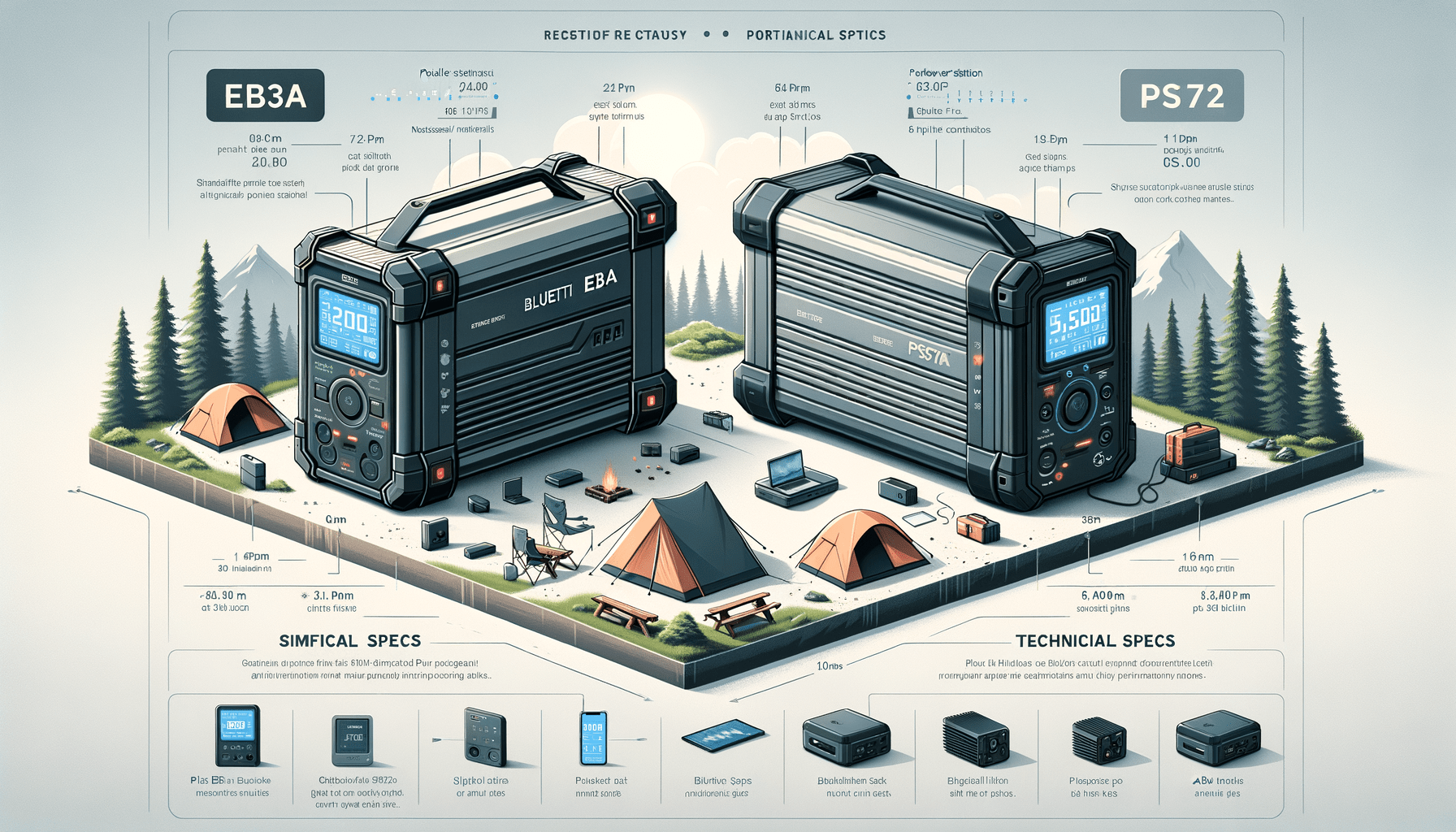When you’re planning to step off the grid, whether it’s for an adventure under the stars or you’re preparing for the unexpected at home, having a reliable portable power station ready can be a game-changer. Our comparison today focuses on two titans in the realm of portable power solutions: the EcoFlow Delta 2 and the Renogy 500. These units are power-packed fortresses promising to keep your gear alive and kicking when standard power sources are just memories.
Capacity and Power Output
The first thing to glance at when picking a portable power station is its capacity and output. The EcoFlow Delta 2 packs an impressive 1024 Wh of energy, expandable through additional battery connections, propelling its 6 AC outlets to an 1800W total output. On the other side, the Renogy 500 offers 495Wh and supports devices up to 800W through its 3 AC outlets.
Charge Time and Solar Integration
Our modern lives revolve around time, and charging time matters. The Delta 2 boasts a swift 0%-80% charge in just 50 minutes, while the Renogy’s iTurbo technology promises a full recharge within an hour. Solar integration is crucial for extended autonomy, and both units can be paired with solar panels – the Delta 2 being solar agnostic and the Renogy harmonizing with its e.flex 220W panel.
Portability and Design
The design-savvy will love the Delta 2’s sleek figure and 27lbs of heft, compared to the Renogy’s more compact and lightweight 16.71 lbs design. Aesthetics aside, it’s the ease of transport and durability that will steal the hearts of roamers and preppers alike.
Innovations and Extras
Innovation isn’t just a buzzword; it’s what makes these two units stand out. The Delta 2 shines with its X-Boost feature, enabling you to power devices up to 2200W by borrowing from other ports. Meanwhile, the Renogy 500 doesn’t fall short, offering a remote monitoring and control app, DC HOME, keeping you in command from wherever you are.
Safety and Reliability
No amount of power compensates for safety. EcoFlow and Renogy don’t skimp on this, both integrating advanced BMS to protect against possible electrical mishaps. While the Delta 2 provides extra peace of mind with its EPS feature that seamlessly switches to battery power during grid failures.
Compatibility and Ecosystem
Choosing a power station often means looking at the ecosystem it lives in. The EcoFlow Delta 2’s compatibility with various accessories allows for a tailored power solution, while Renogy’s Power Station 500 offers expansion through a parallel connection, doubling its capacity and output when paired with another unit.
Head-to-Head: Spec Comparison
| Aspect | EcoFlow Delta 2 | Renogy 500 |
|---|---|---|
| Base Capacity | 1024 Wh | 495Wh |
| Max AC Output | 1800W (Surge 2700W) | 800W (Surge 1600W) |
| Charge Time 0-80% | 50 minutes | Approx. 1 hour |
| Solar Charging | 3-6 hours via 400W | Compatible with e.flex 220W |
| MPPT Efficiency | >98% | Integrated MPPT |
| Weight | 27lbs / 12kg | 16.71 lbs. / 7.58 kg |
| Expandable Ecosystem | Yes | iStack Function |


Ultimately, whether you’re drawn to the EcoFlow Delta 2’s beefy capacity or the Renogy 500’s lean efficiency, both are stellar companions for your electrical needs beyond the grid. As you venture into nature or brace against the unexpected, your choice between these two giants should be informed by your specific power demands, budget considerations, and the kind of tech conveniences that resonate with your lifestyle.


Leave a Reply